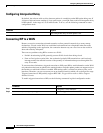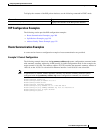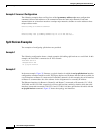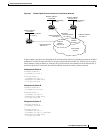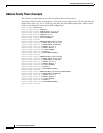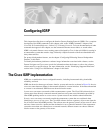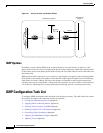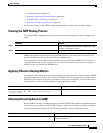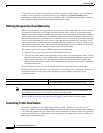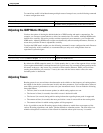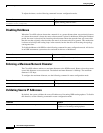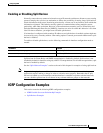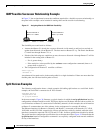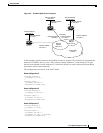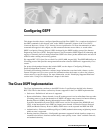
Configuring IGRP
IGRP Configuration Task List
IPC-216
Cisco IOS IP Configuration Guide
To control the set of interfaces with which you want to exchange routing updates, you can disable the
sending of routing updates on specified interfaces by configuring the passive-interface router
configuration command. See the discussion on filtering in the “Filter Routing Information” section in
the “Configuring IP Routing Protocol-Independent Features” chapter.
Defining Unequal-Cost Load Balancing
IGRP can simultaneously use an asymmetric set of paths for a given destination. This feature is known
as unequal-cost load balancing. Unequal-cost load balancing allows traffic to be distributed among
multiple (up to four) unequal-cost paths to provide greater overall throughput and reliability. Alternate
path variance (that is, the difference in desirability between the primary and alternate paths) is used to
determine the feasibility of a potential route. An alternate route is feasible if the next router in the path
is closer to the destination (has a lower metric value) than the current router and if the metric for the
entire alternate path is within the variance. Only paths that are feasible can be used for load balancing
and included in the routing table. These conditions limit the number of cases in which load balancing
can occur, but ensure that the dynamics of the network will remain stable.
The following general rules apply to IGRP unequal-cost load balancing:
• IGRP will accept up to four paths for a given destination network.
• The local best metric must be greater than the metric learned from the next router; that is, the next
hop router must be closer (have a smaller metric value) to the destination than the local best metric.
• The alternative path metric must be within the specified variance of the local best metric. The
multiplier times the local best metric for the destination must be greater than or equal to the metric
through the next router.
If these conditions are met, the route is deemed feasible and can be added to the routing table.
By default, the amount of variance is set to one (equal-cost load balancing). To define how much worse
an alternate path can be before that path is disallowed, use the following command in router
configuration mode:
Note By using the variance feature, the Cisco IOS software can balance traffic across all feasible paths and
can immediately converge to a new path if one of the paths should fail.
See the “IGRP Feasible Successor Relationship Example” section at the end of this chapter.
Controlling Traffic Distribution
If variance is configured as described in the preceding section, “Defining Unequal-Cost Load
Balancing,” IGRP or Enhanced IGRP (EIGRP) will distribute traffic among multiple routes of unequal
cost to the same destination. If you want to have faster convergence to alternate routes, but you do not
want to send traffic across inferior routes in the normal case, you might prefer to have no traffic flow
along routes with higher metrics.
Command Purpose
Router(config-router)# variance multiplier
Defines the variance associated with a particular path.



